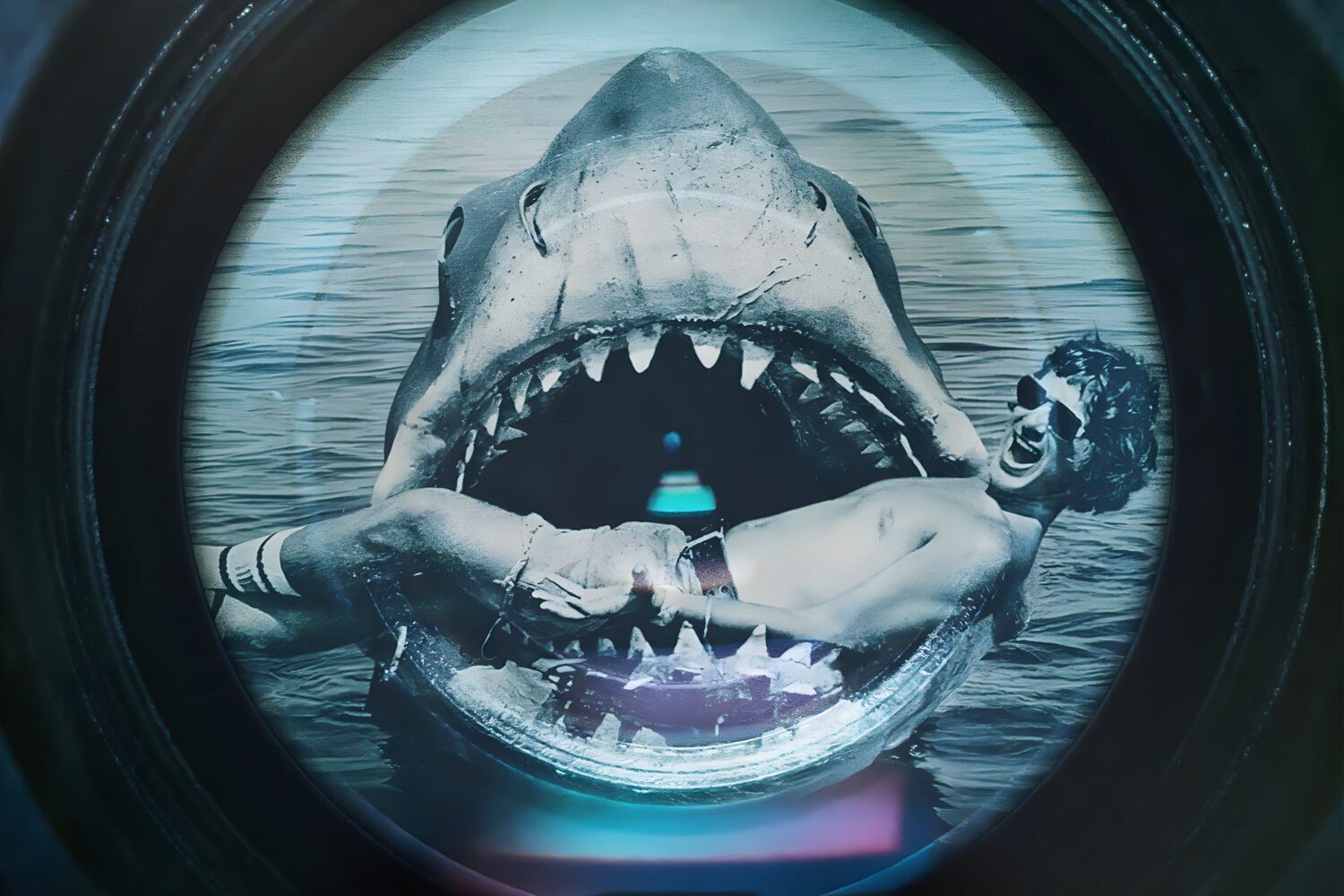TL;DR: “Jaws @ 50: The Definitive Inside Story” is a deeply affectionate, often hilarious, and surprisingly emotional documentary that peels back every layer of Spielberg’s shark-infested nightmare turned masterpiece. Whether you’re a Jaws acolyte or a casual cinephile, it’s a must-watch reminder that the biggest monsters are rarely mechanical sharks – they’re deadlines, breakdowns, and your own youthful ambition.
JAWS @ 50
The First Bite: Childhood Terrors Revisited
I was five years old when I first saw Jaws, a movie I had absolutely no business watching, courtesy of an older cousin who assured me, “It’s just about a fish.” That night, I refused to let my foot dangle over my mattress for fear a Great White would breach my cheap IKEA bedframe. Even now, half a lifetime later, that fear hasn’t fully dissolved.
So when I sat down for National Geographic’s “Jaws @ 50: The Definitive Inside Story,” I expected nostalgia. What I didn’t expect was a 90-minute existential deep dive into the chaos, accidents, brilliance, and stubbornness that turned a B-movie thriller about a shark into the film that birthed Hollywood’s concept of the summer blockbuster.
Beyond the Shark: Spielberg’s Dance with Doom
Directed by Laurent Bouzereau – the same documentarian who gave us Music by John Williams – this film is less a straight timeline of production anecdotes and more a messy, affectionate scrapbook. Here, Spielberg doesn’t just recount how Bruce the mechanical shark broke down; he lets you feel what it was like to be a kid director with a $9 million budget spiraling into the Atlantic Ocean, each breakdown threatening to drown him professionally.
Spielberg is the star here, obviously, and he knows it. But his recollections carry a warmth, a sheepishness even, that only men in their seventies possess when they look back on a defining moment of their twenties. He talks about near-firings, panic attacks, and his refusal to direct a sequel with the tone of someone who survived war and came back with medals, scars, and a sardonic grin.
Shark vs. Humanity: The Real Story
Jaws @ 50 doesn’t rest on Spielbergian lore alone. It gives generous screentime to author Peter Benchley’s family, production designer Joe Alves, screenwriter Carl Gottlieb, and even Martha’s Vineyard locals who were roped in as extras. Jeffrey Voorhees, who played the ill-fated Alex Kintner, recounts his death scene with disarming humility, still a little stunned that his five minutes of screen time shaped the rest of his life.
That’s the beauty of this documentary. It’s not merely about how the mechanical shark malfunctioned so often that the crew nicknamed it “Flaws.” It’s about the human ecosystem around Jaws – the infighting, the beer-soaked nights, the residents-turned-movie-stars, and the dozens of potential book titles Benchley scribbled down before landing on “Jaws.” (My personal favourite reject title? Leviathan Rising. Good call, Peter.)
Cultural Ripples: Peele, Cameron, Del Toro, and the Children of Jaws
Jaws @ 50 also lands its punches by including commentary from Hollywood’s current titans. Jordan Peele speaks about how Jaws influenced the sense of lurking dread in Nope. James Cameron, Steven Soderbergh, Guillermo del Toro – each revere it as the film that taught them cinema’s golden rule: Show less, scare more.
This is where the documentary reveals its thesis. It’s not really about a shark. It’s about cinematic restraint. Spielberg’s forced minimalism (due to mechanical failure) created an entire philosophy of horror filmmaking. The fear of what you can’t see. The suggestion of violence over the depiction of it. The tension of quiet ocean water rather than a gory spectacle.
A Generation’s Fear: Mechanical Sharks and Mechanical Hearts
I found myself weirdly emotional watching Spielberg recount Jaws’ release day, when he bought a ticket to a local cinema and stood at the back, terrified it would flop. It’s easy to forget he was in his twenties, probably feeling like most of us did when we sent off our first university essay or work pitch. Except his flop risk wasn’t a low grade or managerial sigh – it was a career implosion witnessed by Universal Pictures and the entire industry.
It’s this human fragility that makes Jaws @ 50 feel like a warm, honest memoir rather than a technical retrospective. Yes, it’s packed with behind-the-scenes stories, from shark scale decisions to shooting logistics that make Dunkirk look like a beach holiday. But it’s also about how an untested director, a malfunctioning shark, and a New England tourist town created a modern myth.
Verdict: The Monster Movie That Ate The World
Watching “Jaws @ 50: The Definitive Inside Story” is like listening to your grandparents talk about Woodstock, except here Woodstock is a broken mechanical fish, Richard Dreyfuss pranking Robert Shaw, and Spielberg learning to weaponise suspense.
It’s a love letter to ingenuity, chaos, and the raw terror that lives in all of us – the fear of oceans, the fear of failure, the fear that your movie will bomb and you’ll be working commercials for the rest of your life.
“Jaws @ 50: The Definitive Inside Story” is a masterclass in filmmaking nostalgia, an ode to imperfect machinery, and a reminder that the best horror isn’t about what’s eating you – it’s about what you’re running from.






